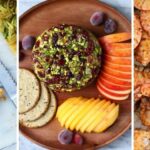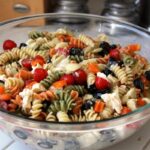Embark on a culinary adventure with this comprehensive guide to creating delicious and satisfying dairy-free meals the whole family will crave! Imagine vibrant, colorful plates piled high with nourishing dishes, bursting with flavor and free from dairy restrictions. We’ll unveil the secrets to transforming everyday family favorites into dairy-free delights, showcasing innovative recipes and techniques that prioritize both taste and health. Prepare to discover a world of exciting possibilities, where wholesome ingredients meet culinary creativity, resulting in meals that are as visually appealing as they are delicious.
From hearty main courses and refreshing salads to decadent desserts and simple weeknight dinners, this guide offers a wealth of inspiration. Learn to master dairy-free substitutions, understand the science behind dairy-free baking, and explore a variety of cooking methods to create textures and flavors that rival traditional recipes. We’ll provide detailed step-by-step instructions, stunning visuals, and practical tips to make your dairy-free cooking journey both enjoyable and successful. Get ready to transform your family’s meals and redefine the possibilities of dairy-free cuisine!
Dairy-Free Sides and Salads

Dairy-free cooking opens up a world of vibrant flavors and textures, especially when it comes to side dishes and salads. By eliminating dairy, we unlock the opportunity to highlight the natural tastes of fresh produce and inventive seasonings. These recipes showcase the delicious possibilities of dairy-free cuisine, proving that healthy and flavorful meals can be enjoyed by everyone.
Dairy-Free Side Dishes and Salads Recipes
The following recipes offer a variety of flavors and textures, perfect for complementing a range of main courses. Each recipe emphasizes fresh, seasonal ingredients for optimal taste and nutritional value.
- Roasted Asparagus with Lemon and Herbs: Toss 1 pound asparagus spears with 2 tablespoons olive oil, 1 tablespoon lemon juice, 1 teaspoon dried oregano, and salt and pepper to taste. Roast at 400°F (200°C) for 12-15 minutes, or until tender-crisp. The vibrant green asparagus spears, glistening with olive oil, offer a delightful contrast of tender-crisp texture and bright, herbaceous flavor.
- Garlic and Herb Roasted Sweet Potatoes: Cube 2 large sweet potatoes and toss with 2 tablespoons olive oil, 2 cloves minced garlic, 1 teaspoon dried rosemary, salt, and pepper. Roast at 400°F (200°C) for 20-25 minutes, or until tender. The sweet potatoes, caramelized to perfection, offer a soft, yielding texture and a naturally sweet flavor enhanced by the savory garlic and rosemary.
- Quinoa Salad with Roasted Vegetables: Cook 1 cup quinoa according to package directions. Roast 1 cup chopped bell peppers, 1 cup broccoli florets, and ½ cup zucchini until tender. Combine cooked quinoa, roasted vegetables, ¼ cup chopped red onion, ¼ cup chopped fresh parsley, and a lemon-tahini dressing (recipe below). The colorful medley of roasted vegetables and fluffy quinoa creates a hearty and visually appealing salad, bursting with fresh, earthy flavors.
- Simple Green Salad with Avocado Dressing: Combine your favorite greens (e.g., spinach, romaine, arugula) with sliced cucumber, cherry tomatoes, and a creamy avocado dressing (recipe below). The vibrant greens, contrasting textures of the cucumber and tomatoes, and the rich avocado dressing make for a refreshing and satisfying salad.
- Grilled Corn Salad with Cilantro-Lime Dressing: Grill 4 ears of corn until kernels are slightly charred. Cut kernels off the cob and combine with ½ cup chopped red onion, ½ cup chopped cilantro, and a cilantro-lime dressing (recipe below). The slightly charred corn kernels, infused with smoky flavor, pair perfectly with the bright, zesty cilantro-lime dressing, creating a vibrant and flavorful salad.
The Importance of Fresh, Seasonal Ingredients
Using fresh, seasonal ingredients in dairy-free cooking is paramount. Peak-season produce boasts superior flavor and higher nutritional content. For example, summer tomatoes are bursting with sweetness and juiciness compared to their out-of-season counterparts. Incorporating seasonal fruits and vegetables not only enhances the taste of your dishes but also provides a wider array of vitamins and minerals. This approach contributes to a more vibrant and nutritious dairy-free diet.
Dairy-Free Creamy Dressing Methods
Three distinct methods can achieve a creamy dairy-free dressing:
- Avocado-Based Dressing: Blend 1 ripe avocado, ¼ cup water, 2 tablespoons lime juice, 1 tablespoon olive oil, salt, and pepper until smooth and creamy. The rich, buttery avocado creates a luxuriously creamy base, complemented by the bright citrus notes of lime juice. This dressing is particularly well-suited for salads with robust flavors.
- Nut-Based Dressing: Combine ½ cup soaked cashews (or other nuts), ¼ cup water, 2 tablespoons lemon juice, 1 tablespoon olive oil, 1 tablespoon nutritional yeast (for a cheesy flavor), salt, and pepper in a high-speed blender until smooth and creamy. The creamy texture provided by the soaked nuts offers a versatile base that can be adjusted to various flavor profiles. Nutritional yeast adds a savory, umami note.
- Tahini-Based Dressing: Whisk together ¼ cup tahini, 2 tablespoons lemon juice, 2 tablespoons water, 1 tablespoon olive oil, 1 clove minced garlic, salt, and pepper until smooth and creamy. The nutty tahini creates a rich and subtly sweet dressing, ideal for salads with roasted vegetables or grains. The garlic adds a pungent, savory note that complements the tahini’s flavor.
Creating delicious and healthy dairy-free meals for your family doesn’t have to be daunting. With a little creativity and the right techniques, you can easily adapt your favorite recipes and discover a whole new world of culinary possibilities. This guide has equipped you with the knowledge and inspiration to craft vibrant, flavorful meals that are not only free from dairy but also packed with nutrition and brimming with family-friendly appeal. So, embrace the challenge, experiment with new ingredients, and enjoy the journey of creating unforgettable dairy-free dining experiences for your loved ones. The rewards—happy families and delicious meals—are well worth the effort!
General Inquiries
What are some common dairy-free milk alternatives?
Popular choices include almond milk, soy milk, oat milk, coconut milk, and rice milk. The best option depends on individual preferences and dietary needs.
Can I freeze dairy-free meals?
Many dairy-free meals freeze well. Consider the ingredients; some sauces or dressings might separate upon thawing. Always allow meals to cool completely before freezing.
How do I make dairy-free cooking more cost-effective?
Plan your meals in advance, buy in bulk when possible, and utilize seasonal produce. Consider making your own dairy-free alternatives, such as nut milks, to save money.
Are all dairy-free products automatically vegan?
Not necessarily. Some dairy-free products may contain honey or other animal-derived ingredients. Always check the ingredient list to ensure it aligns with your dietary preferences.


